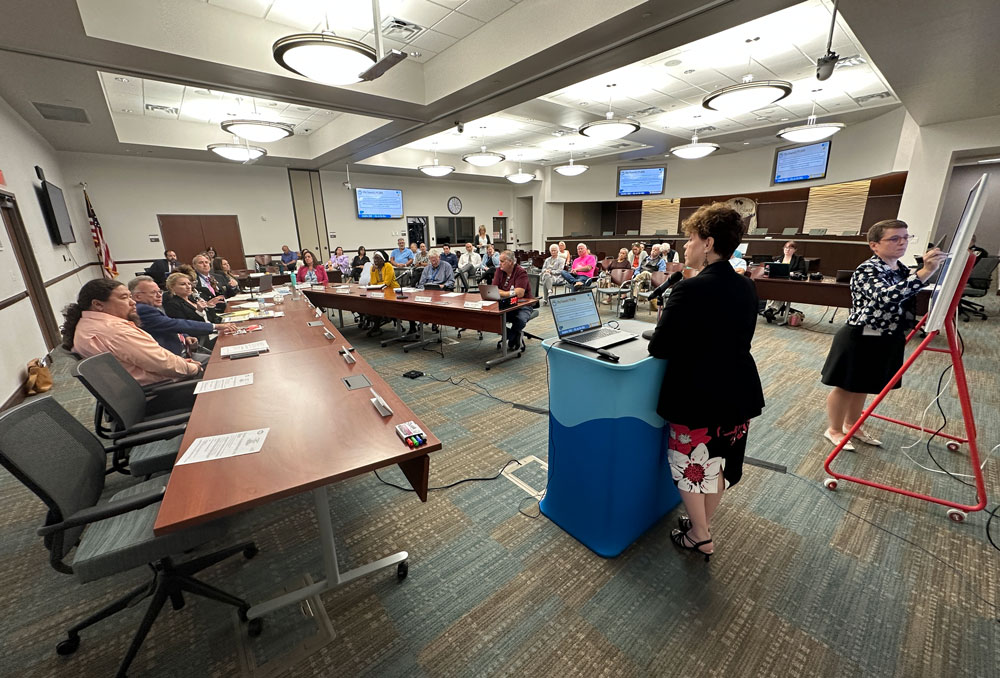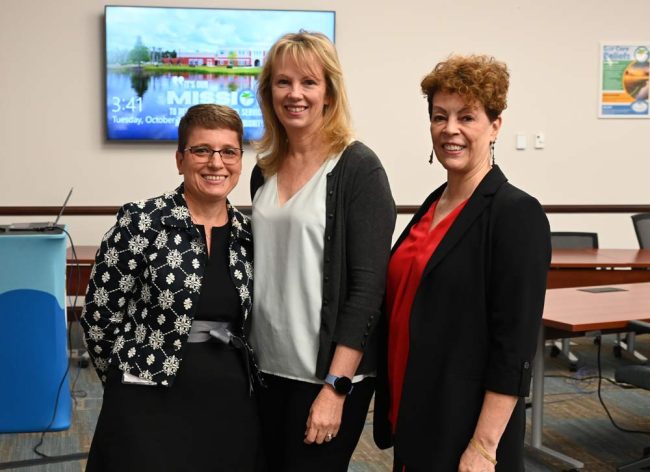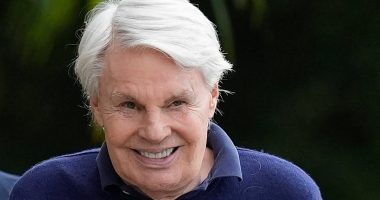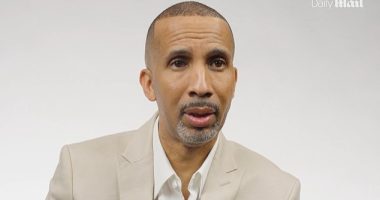
What should Palm Coast look like in 2050? City Hall today kicked off a 14-month process to answer that question, to do so by engaging as many residents as possible as inclusively as possible along the way, ending with a document that will re-imagines the city’s blueprint as its residents want it to be at mid-century.
In the words of Hung Hilton, a member of the city’s planning board, it’ll be “what the city hopes to be when we grow up.”
The result of that exercise will be a complete re-write of the city’s “Comprehensive Plan,” the first since 2004. A Comp Plan is a clunky, often off-putting pair of words that are second nature to planners but that often seem opaque and impenetrable to residents at large. They won’t be by the time a team of consultants break down those walls and put residents–at least those residents that want to be heard–in commanding positions to influence the final product.
In simpler terms, a comprehensive plan, which is required by law, defines in overlays where the parks will be, where the apartment complexes will be (or not), where the zones mixing businesses and residences will be (if any), where the protected lands will be, what the balance between this and that type of housing should be, and so on. Palm Coast hasn’t rewritten its plan in 20 years.
The message from the consultants the city hired–for $150,000–to shepherd the rewrite is that the city will break down every obstacle to invite the public, business, civic groups and interest groups to be part of what will result in the city’s most important overarching policy document next to its charter.
To hear those consultants this afternoon as they briefed the Palm Coast City Council and the city’s planning board on the task ahead is to hear translators and facilitators doing all they can to eliminate jargon, make the process approachable and make residents feel that they will be–and must be–an integral part of that rewrite.
“You hear a lot in the media about people being divided, this thing that our country [being] in place that we don’t recognize,” Kathie Ebaugh of JB Pro, who is leading the team, told the assembled. “I don’t know whether or not that’s true, but I know that when we do community engagement efforts, we do them because we want people to not feel divided. We want people not to feel isolated. We want people not to feel that they aren’t welcome to the table. We want people not to feel that they are the other. We want people to feel like they are part of something that we’re all a part of something, we’re all a part of Palm Coast. So in the end, we’re going to have lots of ideas that are going to come to the table, and we’re going to agree to compromise and we’re going to agree to understand each other, and we’re going to agree to prioritize what’s most important for Palm Coast so that we can create a shared set of values, a shared vision for our future moving forward.”
This is happening at a time when the city, judging from the tone and occasional tensions of its council meetings and workshops, is going through intense growth–painful to many. That growth seems inevitable in the face of long-time residents who might prefer a different pace, especially when comprehensive plans don’t have the immutability they had two and three decades ago. These days, a comprehensive plan is closer to a suggestion than a mandate. Its components are easily overridden by simple council votes, though the consultants insist that when a community “takes ownership” of its plan, as is the hope with Imagine 2050, it can control its fate more assuredly. (The City Council, however, still has the final say.)
“You certainly have lit a fuse to a rocket to our future,” Mayor David Alfin–himself an enthusiast of the city’s growing spurt and a lightning rod for opponents of that growth–told the consultants. He wants a process “as inclusive as possible,” with financial sustainability underpinning all the plan’s aspects, and a final document that will be as pragmatic as it is usable.
It’ll be a challenge: even the men and women sitting around the table today had their very varied ideas of what they’d like to see in the plan.
Read Related Also: Details About Priscilla Presley's Relationship With Ex Marco Garibaldi
“I hope our demographics are as happy with the outcome of the process as younger people will be,” Dave Ferguson, a member of the planning board, said. (The median age in Palm Coast is just under 50.)
Ebaugh delivered her briefing alongside Planner Allara Mills Gutcher of the Planning Collaborative and Silvia Vargas of Calvin, Giordano & Associates. Each spoke in plain English and with an enthusiasm for the job as if they were about to revive the City Beautiful movement in Palm Coast (not that Palm Coast needs more beautification, though many of its residents think it needs less crowding).

On Wednesday, a similar kick-off will take place at the Palm Coast Community Center, that one directly involving the public at large. That opening session is scheduled for three hours, starting at 4 p.m.
Ebaugh sees her team facilitating a vision, a discussion and a conversation with the community. It’s “about listening,” Ebaugh, said, insisting on her team’s role as a sounding board, not a driver. “We aren’t doing anything for Palm Coast, we are working with you in a collaborative process,” as an extension of the city staff, and with the community.
The process isn’t for board rooms, she said, but “where people are”–any people who believe they are a member of the community. That’ll be done through civic and other clubs, churches, schools, anywhere the consultants are sought out. Ebaugh credited a “second-to-none” city public information team that will enable those who don’t want to participate in person, do so in other ways.
“You cannot always get everyone to the table but you have to try to get everyone to the table,” Vargas said. Today’s and Wednesday’s meetings will “set the tone for what we’re going to be doing over the next 14 months or so.” Everyone doesn’t have to agree, but shared ideas, common ground, are essential. “That is going to serve as our destination,” she said, resulting in a “strategic to-do list” to work on over the next decades.
A half dozen people addressed the collective boards at the beginning of the meeting–half of them regulars, half of them not–giving a hint of what public engagement may produce in the coming months (the city is getting too noisy, too traffic-heavy, its housing options are out of balance), with a few commending the city for opening up the process, as it isn’t necessarily required to–at least not to this extent. “I just wanted to say thank you for doing this,” Kathy Austrino, a candidate for a council seat next year, said, urging residents to be part of the discussion. “The more participation, the better off we all are.”
Wednesday’s event at the Community Center, Brittany Kershaw, the city’s communications director, said, will be a mini version of today’s presentation, and the first chance for the public to speak at length. The city is handling Imagine 2050 as if it were preparing for the Olympics. It’s been driving a social media campaign, distributing fliers, small business cards with QR codes, press releases, and information through the city’s weekly newsletter, plus a website that centralizes it all and links to interactive uses for the public, such as an “ideas wall” that lets residents write their thoughts. Another feature lets users pin a place on a map of the city where they could imagine new amenities. “It’s very quick, very simple interactions, but it also gets the engagement going,” Kershaw said.
The consultants will not be focused on quantity so much as quality of participation from the public, and they won’t be dictating the results. Those will be in residents’ hands. “The community needs to be who it is,” Ebaugh said.
![]()
AgendaPacket_2023-10-10_FinalSpecialWorkshop










